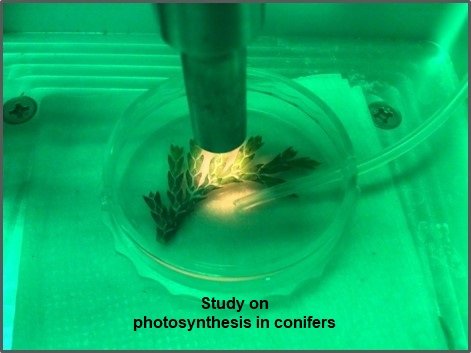研究室紹介
Plant Metabolic Physiology
Conifers are generally tolerant to environmental stresses. They dominate in the mid- to high-latitude regions of the Northern Hemisphere where severe climatic conditions such as chilling and drought often hit. Conifers possess various mechanisms to adapt to surrounding environmental conditions. Among them, regulation of photosynthesis is crucial for the adaptation. In the absence of the regulation, photosynthesis is readily damaged under stress conditions. We have studied mechanisms of stress tolerance of conifers from the view point of regulation of photosynthesis.

Research Interests
1.Mechanisms of stress tolerance of conifers
2.Regulation of the Mehler reaction
3.Regulation of the PSI cyclic electron flow
4.Development of a method to analyze photosynthetic function
A feature of photosynthetic electron flow in conifers, a main component of gymnosperm genera, is in a capacity of the Mehler reaction. In photosynthetic electron transport, electrons derived from water-splitting reaction in photosystem (PS) II are transferred to PS I. Under the conditions where the final electron acceptors of the electron flow NADP+ is in short supply (e.g., at low temperature or drought), oxygen is reduced in PSI (the Mehler reaction). Conifers have a higher (about 10 times) capacity of the Mehler reaction than angiosperms. The Mehler reaction helps to avoid over-reduction of electron carriers in the thylakoid membrane and thus photoinhibition of photosynthesis. The reason for the higher capacity of the Mehler reaction in conifers is a low capacity of the cyclic electron flow around PSI, which competes for electrons with the Mehler reaction.












 Contact
Contact
 Access Map
Access Map

